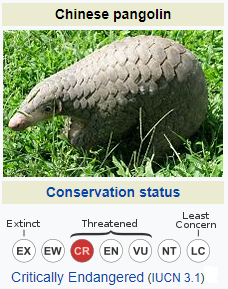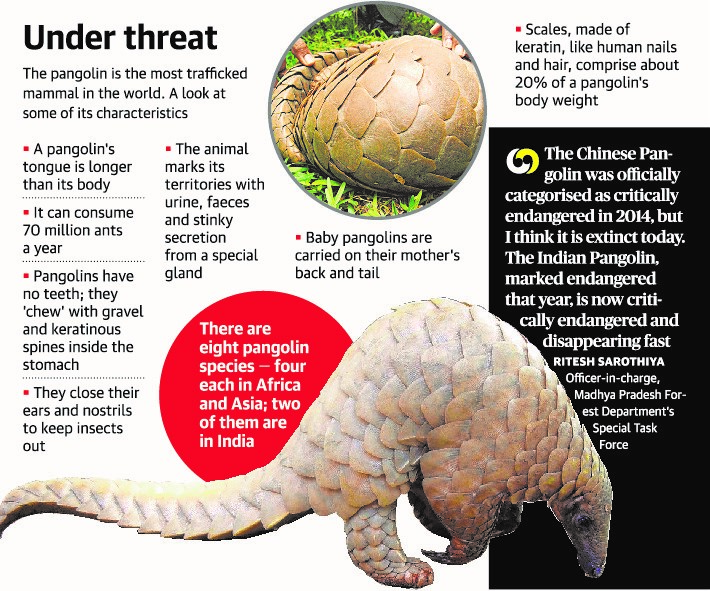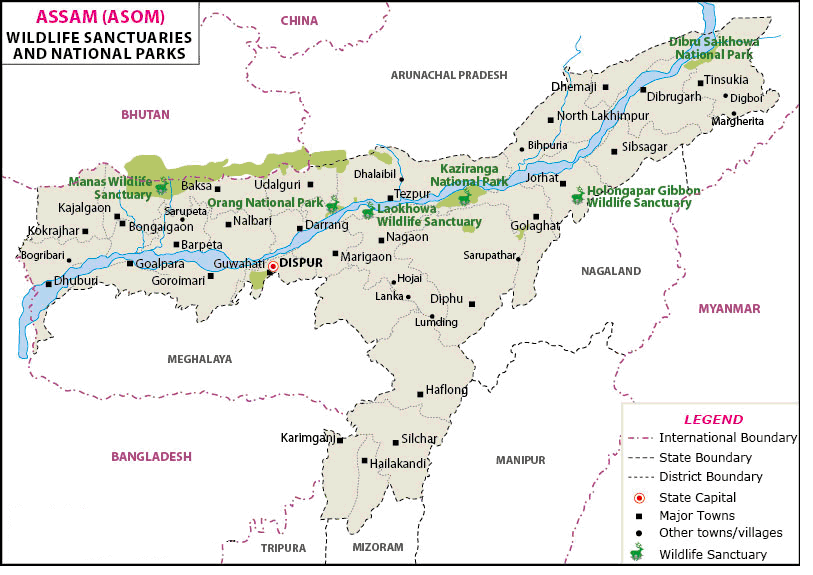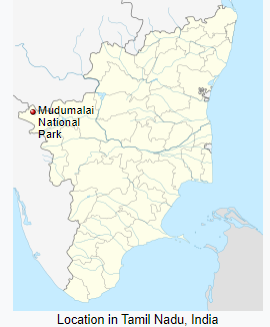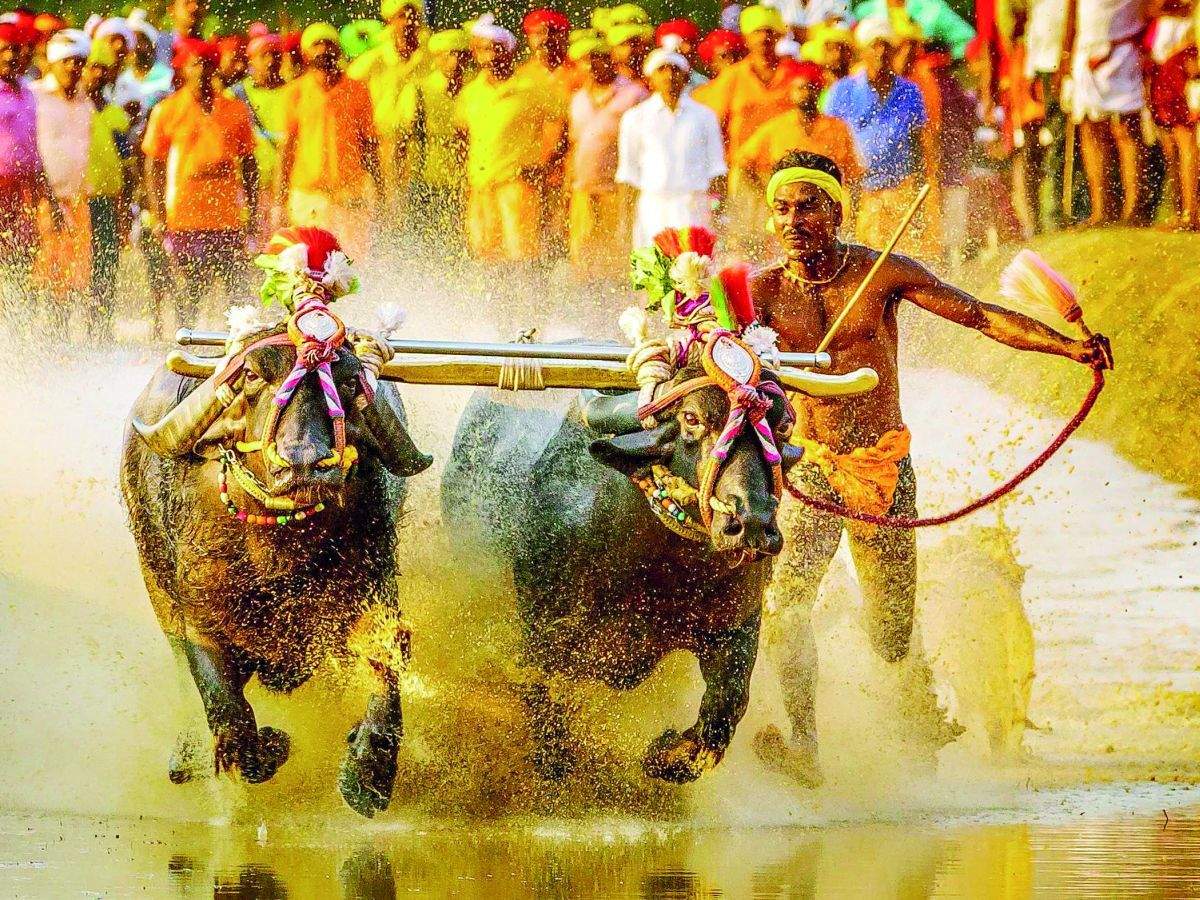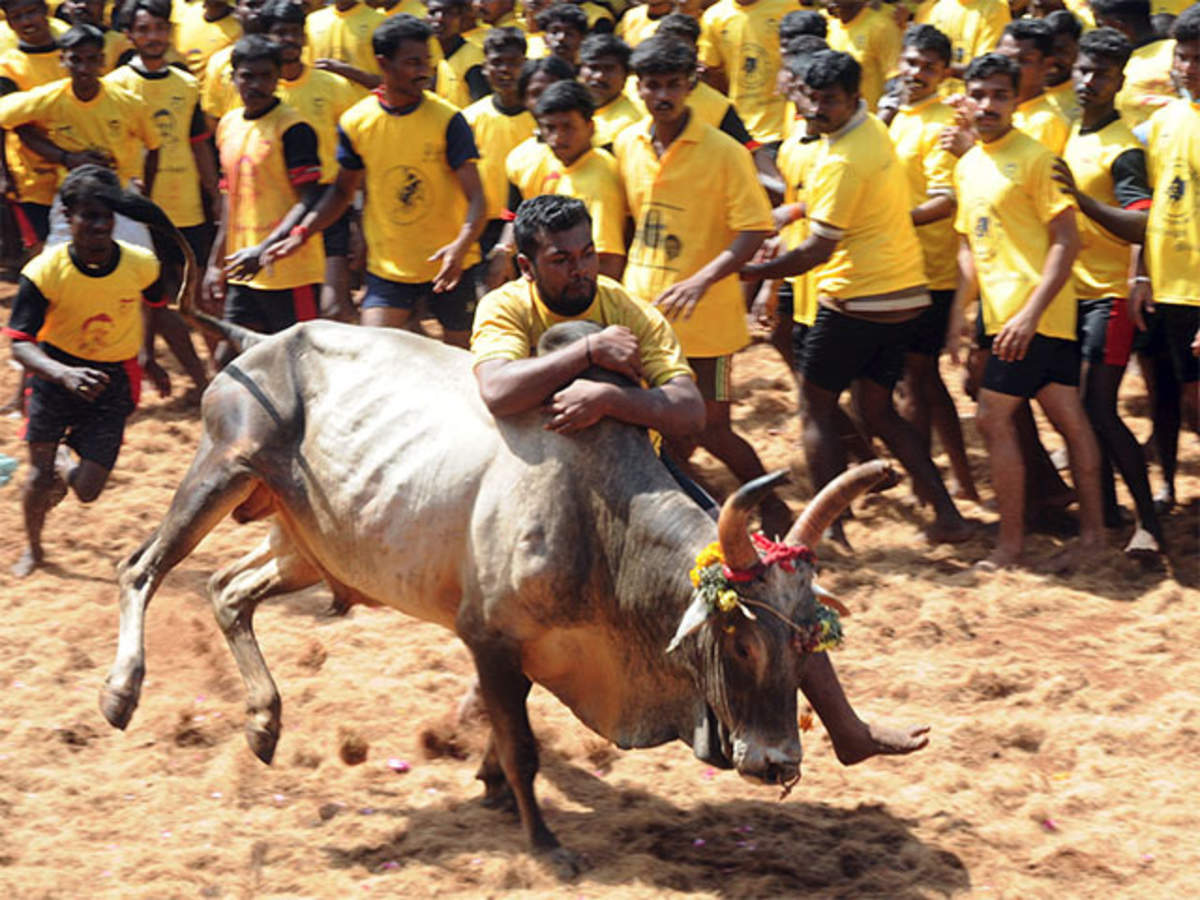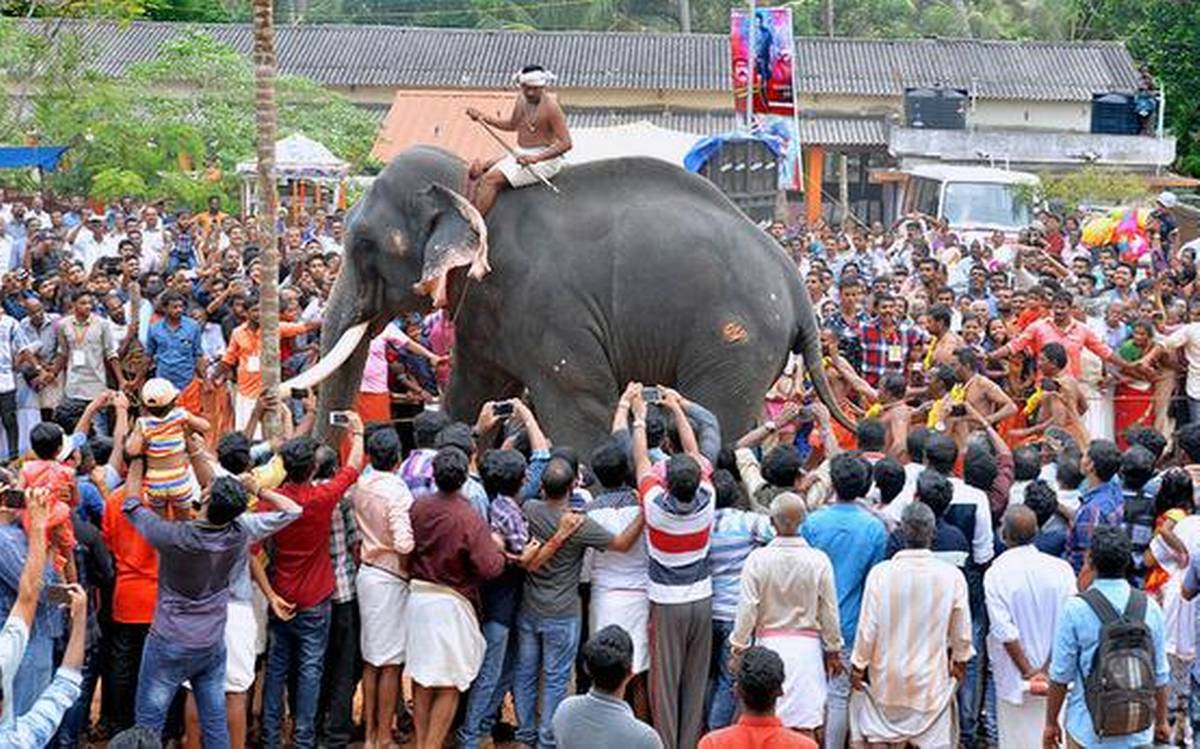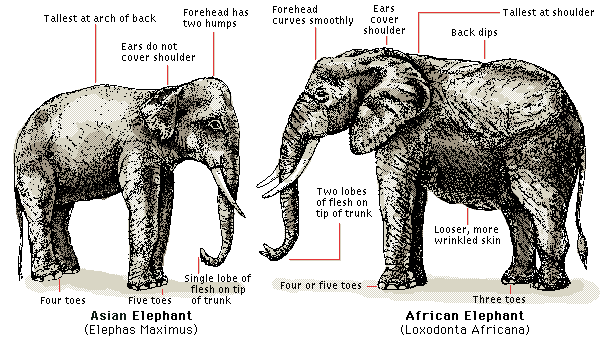The Jan 6th Current Affairs Quiz 2021
Quiz-summary
0 of 10 questions completed
Questions:
- 1
- 2
- 3
- 4
- 5
- 6
- 7
- 8
- 9
- 10
Information
The Jan 6th Current Affairs Quiz 2021
You have already completed the quiz before. Hence you can not start it again.
Quiz is loading...
You must sign in or sign up to start the quiz.
You have to finish following quiz, to start this quiz:
Results
0 of 10 questions answered correctly
Your time:
Time has elapsed
You have reached 0 of 0 points, (0)
Categories
- Not categorized 0%
- 1
- 2
- 3
- 4
- 5
- 6
- 7
- 8
- 9
- 10
- Answered
- Review
- Question 1 of 10
1. Question
Which of the following statements regaridng Indian Pangolin are incorrect?
1. Out of the eight species of pangolin, the Indian Pangolin and the Chinese Pangolin are found only in India.
2. The Indian Pangolin is Critically Endangered
3. According to the laws of our land, both the Indian and the Chinese pangolin species are protected under Schedule 1 of the Wildlife (Protection) Act, 1972.CorrectAns; – b) Only 2 and 3
Explanation; –
• The 2nd and 3rd statement are incorrect, as question asked to choose incorrect.
• Recently Investigations revealed that the accused were trading pangolin and scales online by forming WhatsApp groups in which videos and photos were shared with potential customers, often based outside the country, and details communicated in codes to conceal the transactionsAbout Indian Pangolin
• Out of the eight species of pangolin, the Indian Pangolin (Manis crassicaudata) and the Chinese Pangolin (Manis pentadactyla) are found in India.
• Indian Pangolin is a large anteater covered by 11-13 rows of scales on the back.
• A terminal scale is also present on the lower side of the tail of the Indian Pangolin, which is absent in the Chinese Pangolin.
• Indian Pangolin is widely distributed in India, except the arid region, high Himalayas and the North-East.
• The species is also found in Bangladesh, Pakistan, Nepal and Sri Lanka.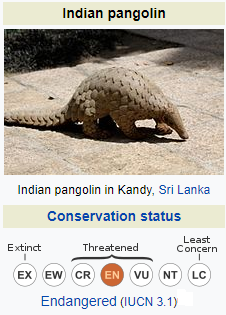
• Chinese Pangolin is found in the Himalayan foothills in Eastern Nepal, Bhutan, Northern India, North-East Bangladesh and through Southern China.

• Threats to Pangolins in India, Hunting and poaching for local consumptive use (e.g. as a protein source and traditional medicine) and international trade for its meat and scales in East and South East Asian countries, particularly China and Vietnam.
• Protection Status IUCN Red List
1. Indian Pangolin: Endangered
2. Chinese Pangolin: Critically Endangered
3. Both these species are listed under Schedule I, Part I of the Wildlife (Protection) Act, 1972. Incorrect
IncorrectAns; – b) Only 2 and 3
Explanation; –
• The 2nd and 3rd statement are incorrect, as question asked to choose incorrect.
• Recently Investigations revealed that the accused were trading pangolin and scales online by forming WhatsApp groups in which videos and photos were shared with potential customers, often based outside the country, and details communicated in codes to conceal the transactionsAbout Indian Pangolin
• Out of the eight species of pangolin, the Indian Pangolin (Manis crassicaudata) and the Chinese Pangolin (Manis pentadactyla) are found in India.
• Indian Pangolin is a large anteater covered by 11-13 rows of scales on the back.
• A terminal scale is also present on the lower side of the tail of the Indian Pangolin, which is absent in the Chinese Pangolin.
• Indian Pangolin is widely distributed in India, except the arid region, high Himalayas and the North-East.
• The species is also found in Bangladesh, Pakistan, Nepal and Sri Lanka.
• Chinese Pangolin is found in the Himalayan foothills in Eastern Nepal, Bhutan, Northern India, North-East Bangladesh and through Southern China.

• Threats to Pangolins in India, Hunting and poaching for local consumptive use (e.g. as a protein source and traditional medicine) and international trade for its meat and scales in East and South East Asian countries, particularly China and Vietnam.
• Protection Status IUCN Red List
1. Indian Pangolin: Endangered
2. Chinese Pangolin: Critically Endangered
3. Both these species are listed under Schedule I, Part I of the Wildlife (Protection) Act, 1972.
- Question 2 of 10
2. Question
Which of the Indian Extradition Act, 1962 are correct?
1. In India, the extradition of a fugitive criminal is governed under the Indian Extradition Act, 1962.
2. To consolidate and amend the law relating to the extradition of fugitive criminals and to provide for matters connected therewith, or incidental thereto, the Extradition Act of 1962 was enacted.CorrectAns;- c) Both 1 and 2
Explanation;-
• Both the statements are correct regarding Indian Extradition Act 1962.
• Recently Assange’s extradition to U.S. rejected by U.K. courtAbout Indian Extradition Ac 1962
• It is the formal process of one state surrendering an individual to another state for prosecution or punishment for crimes committed in the requesting country’s jurisdiction.
• This is generally enabled through a bilateral or multilateral treaty.
• In India, the extradition of a fugitive criminal is governed under the Indian Extradition Act, 1962.
• This is for both extraditing of persons to India and from India to foreign countries.
• The basis of the extradition could be a treaty between India and another country.
• India has signed extradition treaties with 43 foreign countries and has extradition arrangements with countries such as Antigua and Barbuda, Croatia, Fiji, Italy, Papua New Guinea, Peru, Singapore, Sri Lanka, Sweden and Tanzania.
• For signing of an Extradition Treaty with any country, mutual consent is required for initiating negotiations through diplomatic channels.Extradition Procedure in India
• Information about the fugitive criminals wanted in foreign countries is received from the country or through Interpol.
• The Interpol wing of the CBI then passes the information to the concerned police departments.
• The information is also passed on to the immigration authorities.
• Then, action can be taken under the 1962 act.IncorrectAns;- c) Both 1 and 2
Explanation;-
• Both the statements are correct regarding Indian Extradition Act 1962.
• Recently Assange’s extradition to U.S. rejected by U.K. courtAbout Indian Extradition Ac 1962
• It is the formal process of one state surrendering an individual to another state for prosecution or punishment for crimes committed in the requesting country’s jurisdiction.
• This is generally enabled through a bilateral or multilateral treaty.
• In India, the extradition of a fugitive criminal is governed under the Indian Extradition Act, 1962.
• This is for both extraditing of persons to India and from India to foreign countries.
• The basis of the extradition could be a treaty between India and another country.
• India has signed extradition treaties with 43 foreign countries and has extradition arrangements with countries such as Antigua and Barbuda, Croatia, Fiji, Italy, Papua New Guinea, Peru, Singapore, Sri Lanka, Sweden and Tanzania.
• For signing of an Extradition Treaty with any country, mutual consent is required for initiating negotiations through diplomatic channels.Extradition Procedure in India
• Information about the fugitive criminals wanted in foreign countries is received from the country or through Interpol.
• The Interpol wing of the CBI then passes the information to the concerned police departments.
• The information is also passed on to the immigration authorities.
• Then, action can be taken under the 1962 act. - Question 3 of 10
3. Question
Which of the following statements are correct regaridng The Medical Termination of Pregnancy (Amendment) Bill, 2020?
1. Currently abortion requires the opinion of one doctor if it is done within 12 weeks of conception and two doctors if it is done between 12 and 20 weeks
2. The Bill sets up state level Medical Boards to decide if a pregnancy may be terminated after 24 weeks in cases of substantial foetal abnormalities.
The Bill decreases the time period within which abortion may be carried out.CorrectAns; – a) Only 1 and 2
Explanation; –
• The statement 3rd is incorrect because the Bill increases the time period within which abortion may be carried out, not increases.Highlight of the Medical Termination of Pregnancy (Amendment) Bill, 2020
• The Act regulates the conditions under which a pregnancy may be aborted. The Bill increases the time period within which abortion may be carried out.
• Currently, abortion requires the opinion of one doctor if it is done within 12 weeks of conception and two doctors if it is done between 12 and 20 weeks.
• The Bill allows abortion to be done on the advice of one doctor up to 20 weeks, and two doctors in the case of certain categories of women between 20 and 24 weeks.
• The Bill sets up state level Medical Boards to decide if a pregnancy may be terminated after 24 weeks in cases of substantial foetal abnormalities.
• Below the difference between MTP Act 1971 and MTP Bill 2020. Incorrect
IncorrectAns; – a) Only 1 and 2
Explanation; –
• The statement 3rd is incorrect because the Bill increases the time period within which abortion may be carried out, not increases.Highlight of the Medical Termination of Pregnancy (Amendment) Bill, 2020
• The Act regulates the conditions under which a pregnancy may be aborted. The Bill increases the time period within which abortion may be carried out.
• Currently, abortion requires the opinion of one doctor if it is done within 12 weeks of conception and two doctors if it is done between 12 and 20 weeks.
• The Bill allows abortion to be done on the advice of one doctor up to 20 weeks, and two doctors in the case of certain categories of women between 20 and 24 weeks.
• The Bill sets up state level Medical Boards to decide if a pregnancy may be terminated after 24 weeks in cases of substantial foetal abnormalities.
• Below the difference between MTP Act 1971 and MTP Bill 2020.
- Question 4 of 10
4. Question
Which of the following statements regaridng Prevention of Cruelty to Animals Act are correct?
1. The legislative intent of the Act is to “prevent the infliction of unnecessary pain or suffering on animals”.
2. The Animal Welfare Board of India (AWBI) was established in 1962 under Section 4 of the Act.
3. Provides the guidelines relating to experimentation on animals for scientific purposes.CorrectAns; -d) All of the above
Explanation; –
• All the statemensts are correctAbout the Prevention of Cruelty to Animals Act, 1960
• The Prevention of Cruelty to Animals Act, 1960, authored by acclaimed dancer and animal lover, Rukmini Devi Arundale, is an Act of the Parliament of India enacted in 1960 to prevent the infliction of unnecessary pain or suffering on animals and to amend the laws relating to the prevention of cruelty to animals.
• The legislative intent of the Act is to “prevent the infliction of unnecessary pain or suffering on animals”.
• The Animal Welfare Board of India (AWBI) was established in 1962 under Section 4 of the Act.
• This Act provides for punishment for causing unnecessary cruelty and suffering to animals.
The Act defines animals and different forms of animals.
• Discusses different forms of cruelty, exceptions, and killing of a suffering animal in case any cruelty has been committed against it, so as to relieve it from further suffering.
• Provides the guidelines relating to experimentation on animals for scientific purposes.
• The Act enshrines the provisions relating to the exhibition of the performing animals, and offences committed against the performing animals.
• This Act provides for the limitation period of 3 months beyond which no prosecution shall lie for any offences under this Act.IncorrectAns; -d) All of the above
Explanation; –
• All the statemensts are correctAbout the Prevention of Cruelty to Animals Act, 1960
• The Prevention of Cruelty to Animals Act, 1960, authored by acclaimed dancer and animal lover, Rukmini Devi Arundale, is an Act of the Parliament of India enacted in 1960 to prevent the infliction of unnecessary pain or suffering on animals and to amend the laws relating to the prevention of cruelty to animals.
• The legislative intent of the Act is to “prevent the infliction of unnecessary pain or suffering on animals”.
• The Animal Welfare Board of India (AWBI) was established in 1962 under Section 4 of the Act.
• This Act provides for punishment for causing unnecessary cruelty and suffering to animals.
The Act defines animals and different forms of animals.
• Discusses different forms of cruelty, exceptions, and killing of a suffering animal in case any cruelty has been committed against it, so as to relieve it from further suffering.
• Provides the guidelines relating to experimentation on animals for scientific purposes.
• The Act enshrines the provisions relating to the exhibition of the performing animals, and offences committed against the performing animals.
• This Act provides for the limitation period of 3 months beyond which no prosecution shall lie for any offences under this Act. - Question 5 of 10
5. Question
Recently seen Dibru-Saikhowa National Park is present in which of the following North Eastern States?
CorrectAns;- b) Assam
Explanation;-
• Recently Assam has asked the State’s Forest and Revenue departments to permanently rehabilitate the indigenous forest dwellers of the Dibru-Saikhowa National Park.
About Dibru-Saikhowa National Park (DSNP)
• DSNP is a national park in Assam located in Dibrugarh and Tinsukia districts.
• It was designated a Biosphere Reserve in July 1997 with an area of 765 sq. km.
• The park is bounded by the Brahmaputra and Lohit Rivers in the north and Dibru river in the south.
• It mainly consists of moist mixed semi-evergreen forests, moist mixed deciduous forests, canebrakes and grasslands.
• It is the largest Salix swamp forest in north-eastern India, with a tropical monsoon climate with a hot and wet summer and cool and usually dry winter. Incorrect
IncorrectAns;- b) Assam
Explanation;-
• Recently Assam has asked the State’s Forest and Revenue departments to permanently rehabilitate the indigenous forest dwellers of the Dibru-Saikhowa National Park.
About Dibru-Saikhowa National Park (DSNP)
• DSNP is a national park in Assam located in Dibrugarh and Tinsukia districts.
• It was designated a Biosphere Reserve in July 1997 with an area of 765 sq. km.
• The park is bounded by the Brahmaputra and Lohit Rivers in the north and Dibru river in the south.
• It mainly consists of moist mixed semi-evergreen forests, moist mixed deciduous forests, canebrakes and grasslands.
• It is the largest Salix swamp forest in north-eastern India, with a tropical monsoon climate with a hot and wet summer and cool and usually dry winter.
- Question 6 of 10
6. Question
Which of the following statements regarding Bird Flu are correct?
1. Bird flu, also known as Avian influenza (AI), is a highly contagious bacterial disease affecting several species of food-producing birds (chickens, turkeys, quails, guinea fowl, etc.) as well as pet birds and wild birds.
2. Occasionally mammals, including humans, may contract avian influenza.CorrectAns;- b) Only 2
Explanation;-
• The statement 1st incorrect because it’s a Viral disease not Bacterial.
• Recently Bird flu confirmed in around 1,800 dead migratory birds in Himachal, infection in four states nowAbout Bird Flu
• Bird flu, also known as Avian influenza (AI), is a highly contagious viral disease affecting several species of food-producing birds (chickens, turkeys, quails, guinea fowl, etc.) as well as pet birds and wild birds.
• Occasionally mammals, including humans, may contract avian influenza.
• Influenza viruses are grouped into three types; A, B, and C. Only type A is known to infect animals and is zoonotic, meaning it can infect animals and also humans.
• Type B and C mostly infect humans and typically cause mild disease.
• Avian influenza virus subtypes include A(H5N1), A(H7N9), and A(H9N2).
• HPAI Asian H5N1 is especially deadly for poultry.
• Avian Influenza outbreaks can lead to devastating consequences for the country, particularly the poultry industry.
• Previously in 2019, India was declared free from Avian Influenza (H5N1), which had also been notified to the World Organization for Animal Health (OIE).
• The status will last only till another outbreak is reported. Incorrect
IncorrectAns;- b) Only 2
Explanation;-
• The statement 1st incorrect because it’s a Viral disease not Bacterial.
• Recently Bird flu confirmed in around 1,800 dead migratory birds in Himachal, infection in four states nowAbout Bird Flu
• Bird flu, also known as Avian influenza (AI), is a highly contagious viral disease affecting several species of food-producing birds (chickens, turkeys, quails, guinea fowl, etc.) as well as pet birds and wild birds.
• Occasionally mammals, including humans, may contract avian influenza.
• Influenza viruses are grouped into three types; A, B, and C. Only type A is known to infect animals and is zoonotic, meaning it can infect animals and also humans.
• Type B and C mostly infect humans and typically cause mild disease.
• Avian influenza virus subtypes include A(H5N1), A(H7N9), and A(H9N2).
• HPAI Asian H5N1 is especially deadly for poultry.
• Avian Influenza outbreaks can lead to devastating consequences for the country, particularly the poultry industry.
• Previously in 2019, India was declared free from Avian Influenza (H5N1), which had also been notified to the World Organization for Animal Health (OIE).
• The status will last only till another outbreak is reported.
- Question 7 of 10
7. Question
“This is a Wildlife Sanctuary, National Park and Tiger Reserve, it lies on the northwestern side of the Nilgiri Hills (Blue Mountains), It shares its boundaries with the states of Karnataka, Tamilnadu and Kerala” Identify the Wildlife Sanctuary
CorrectAns;- c) Mudumalai National Park
Explanation;-
• All the above description suits the Mudumalai National park.
• To improve the provision of meals for vultures within the Mudumalai Tiger Reserve (MTR), the Forest Department is permitting lifeless cattle from a goshala (cow shelter) positioned close by to be left for the scavengers.• The Mudumalai National Park and Wildlife Sanctuary also a declared tiger reserve, lies on the northwestern side of the Nilgiri Hills (Blue Mountains), in Nilgiri District, about 150 kilometres (93 mi) north-west of Coimbatore city in Tamil Nadu, India.
• It shares its boundaries with the states of Karnataka, Tamilnadu and Kerala.
• The sanctuary is divided into five ranges Masinagudi, Thepakadu, Mudumalai, Kargudi and Nellakota.
• The protected area is home to several endangered and vulnerable species including Indian elephant, Bengal tiger, gaur and Indian leopard.
• There are at least 266 species of birds in the sanctuary, including critically endangered Indian white-rumped vulture and long-billed vulture.
• The Western Ghats Nilgiri Sub-Cluster of 6,000 square kilometres (2,300 sq mi), including all of Mudumalai National Park, is under consideration by the UNESCO World Heritage Committee for selection as a World Heritage Site.
• The Nilgiri Biosphere includes the Aralam, Mudumalai, Mukurthi, Nagarhole, Bandipur and Silent Valley national parks, as well as the Wayanad, Karimpuzha, and Sathyamangalam wildlife sanctuaries. Incorrect
IncorrectAns;- c) Mudumalai National Park
Explanation;-
• All the above description suits the Mudumalai National park.
• To improve the provision of meals for vultures within the Mudumalai Tiger Reserve (MTR), the Forest Department is permitting lifeless cattle from a goshala (cow shelter) positioned close by to be left for the scavengers.• The Mudumalai National Park and Wildlife Sanctuary also a declared tiger reserve, lies on the northwestern side of the Nilgiri Hills (Blue Mountains), in Nilgiri District, about 150 kilometres (93 mi) north-west of Coimbatore city in Tamil Nadu, India.
• It shares its boundaries with the states of Karnataka, Tamilnadu and Kerala.
• The sanctuary is divided into five ranges Masinagudi, Thepakadu, Mudumalai, Kargudi and Nellakota.
• The protected area is home to several endangered and vulnerable species including Indian elephant, Bengal tiger, gaur and Indian leopard.
• There are at least 266 species of birds in the sanctuary, including critically endangered Indian white-rumped vulture and long-billed vulture.
• The Western Ghats Nilgiri Sub-Cluster of 6,000 square kilometres (2,300 sq mi), including all of Mudumalai National Park, is under consideration by the UNESCO World Heritage Committee for selection as a World Heritage Site.
• The Nilgiri Biosphere includes the Aralam, Mudumalai, Mukurthi, Nagarhole, Bandipur and Silent Valley national parks, as well as the Wayanad, Karimpuzha, and Sathyamangalam wildlife sanctuaries.
- Question 8 of 10
8. Question
Which of the following sports and their respective states are correctly matched?
1. Jallikattu = Kerala
2. Kambala = Tamilnadu
3. Aanaval Pidi = KarnatakaCorrectAns;- d) None of the above
Explanation;-
• All the sports are incorrectly matched with respect to their states.
• Amid uncertainties over organizing Kambala (slush track buffalo races) in the coastal region due to COVID-19 restrictions, the Kambala Committee of Dakshina Kannada, Udupi and Kasaragod in Kerala has tentatively decided to conduct some Kambala events starting from this month-end.
• Correct pairs:
1. Kambala – Karnataka
2. Jalikattu – Tamil Nadu
3. Aanaval Pidi (Catching elephant’s tail) – Kerala
• Kambala is an annual buffalo race which is a tradition in the Karnataka’s Dakshina Kannada and Udupi districts’ farming community.
• This area is called Tulunadu (Land of Tulu Language).
• A pair of buffaloes are tied to the plough and one person anchors it, beating the buffaloes with a stick to run faster.
• There are two parallel muddy tracks, on which two competing pairs of buffaloes run.
• Fastest team wins.
• ‘Jallikattu’, otherwise known as ‘Eru Thazhuvuthal’ (Tamil for ‘Bull Embracing’) is a sport that has been played in southern Tamil Nadu during Thai Pongal since the Sangam Period. With the advent of green revolution, due to farm mechanization, the use of draught animals has decreased drastically.

• Aanavaal pidi’, It is a unique ritual. Devotees chase an elephant for one hundred metres to catch its tail.
• The ritual is held in the Malayalam month of Meenam at the Umayanallur Sree Bala Subrahmanya Swamy Temple in Kollam.
• The ritual itself is named ‘catching the elephant’s tail’ (aanavaal pidi). Incorrect
IncorrectAns;- d) None of the above
Explanation;-
• All the sports are incorrectly matched with respect to their states.
• Amid uncertainties over organizing Kambala (slush track buffalo races) in the coastal region due to COVID-19 restrictions, the Kambala Committee of Dakshina Kannada, Udupi and Kasaragod in Kerala has tentatively decided to conduct some Kambala events starting from this month-end.
• Correct pairs:
1. Kambala – Karnataka
2. Jalikattu – Tamil Nadu
3. Aanaval Pidi (Catching elephant’s tail) – Kerala
• Kambala is an annual buffalo race which is a tradition in the Karnataka’s Dakshina Kannada and Udupi districts’ farming community.
• This area is called Tulunadu (Land of Tulu Language).
• A pair of buffaloes are tied to the plough and one person anchors it, beating the buffaloes with a stick to run faster.
• There are two parallel muddy tracks, on which two competing pairs of buffaloes run.
• Fastest team wins.
• ‘Jallikattu’, otherwise known as ‘Eru Thazhuvuthal’ (Tamil for ‘Bull Embracing’) is a sport that has been played in southern Tamil Nadu during Thai Pongal since the Sangam Period. With the advent of green revolution, due to farm mechanization, the use of draught animals has decreased drastically.

• Aanavaal pidi’, It is a unique ritual. Devotees chase an elephant for one hundred metres to catch its tail.
• The ritual is held in the Malayalam month of Meenam at the Umayanallur Sree Bala Subrahmanya Swamy Temple in Kollam.
• The ritual itself is named ‘catching the elephant’s tail’ (aanavaal pidi).
- Question 9 of 10
9. Question
The “Basic Law” sometimes seen in the news is related to which of the following countries context?
CorrectAns;- b) Hong Kong
Explanation;-
• The Basic law is related to Hong Kong
• Recently About 50 Hong Kong activists arrested under new security lawAbout Basic Law
• The Basic Law of the Hong Kong Special Administrative Region of the People’s Republic of China is a national law of China that serves as the de facto constitution of the Hong Kong Special Administrative Region.
• The Basic Law was adopted by the National People’s Congress on 4 April 1990 and came into effect on 1 July 1997 in Hong Kong when the sovereignty over Hong Kong was transferred from the United Kingdom to China.
• It replaced Hong Kong’s colonial constitution of the Letters Patent and the Royal Instructions.
• The Basic Law also sets out the sources of law, the relationship between Hong Kong and the Central Government (State Council), the fundamental rights and duties of Hong Kong residents and the branches of local government. Incorrect
IncorrectAns;- b) Hong Kong
Explanation;-
• The Basic law is related to Hong Kong
• Recently About 50 Hong Kong activists arrested under new security lawAbout Basic Law
• The Basic Law of the Hong Kong Special Administrative Region of the People’s Republic of China is a national law of China that serves as the de facto constitution of the Hong Kong Special Administrative Region.
• The Basic Law was adopted by the National People’s Congress on 4 April 1990 and came into effect on 1 July 1997 in Hong Kong when the sovereignty over Hong Kong was transferred from the United Kingdom to China.
• It replaced Hong Kong’s colonial constitution of the Letters Patent and the Royal Instructions.
• The Basic Law also sets out the sources of law, the relationship between Hong Kong and the Central Government (State Council), the fundamental rights and duties of Hong Kong residents and the branches of local government.
- Question 10 of 10
10. Question
Which of the following statements regarding African and Indian Elephant are correct?
1. The Indian Elephant and African Elephant both are under Endangered category
2. There are two subspecies of African elephants, the Savanna (or bush) elephant and the Forest elephant.
3. There are three subspecies of Asian elephant which are the Indian, Sumatran and Sri Lankan.CorrectAns;- b) Only 2 and 3
Explanation;-
• The statement 1 st is incorrect because Indian Elephant is Endangered but African Elephant is Vulnerable
• Recently African elephants surveyed using AIAsian Elephants
• There are three subspecies of Asian elephant which are the Indian, Sumatran and Sri Lankan.
• Global Population: Estimated 20,000 to 40,000.
• The Indian subspecies has the widest range and accounts for the majority of the remaining elephants on the continent.
• There are around 28,000 elephants in India with around 25% of them in Karnataka.
• IUCN Red List Status: Endangered.
• Wildlife (Protection) Act, 1972: Schedule I.African Elephants
• There are two subspecies of African elephants, the Savanna (or bush) elephant and the Forest elephant.
• Global Population: Around 4,00,000.
• IUCN Red List Status: Vulnerable. Earlier in July 2020, Botswana (Africa) witnessed the death of hundreds of elephants. Incorrect
IncorrectAns;- b) Only 2 and 3
Explanation;-
• The statement 1 st is incorrect because Indian Elephant is Endangered but African Elephant is Vulnerable
• Recently African elephants surveyed using AIAsian Elephants
• There are three subspecies of Asian elephant which are the Indian, Sumatran and Sri Lankan.
• Global Population: Estimated 20,000 to 40,000.
• The Indian subspecies has the widest range and accounts for the majority of the remaining elephants on the continent.
• There are around 28,000 elephants in India with around 25% of them in Karnataka.
• IUCN Red List Status: Endangered.
• Wildlife (Protection) Act, 1972: Schedule I.African Elephants
• There are two subspecies of African elephants, the Savanna (or bush) elephant and the Forest elephant.
• Global Population: Around 4,00,000.
• IUCN Red List Status: Vulnerable. Earlier in July 2020, Botswana (Africa) witnessed the death of hundreds of elephants.

